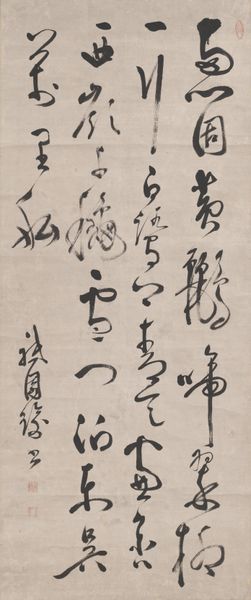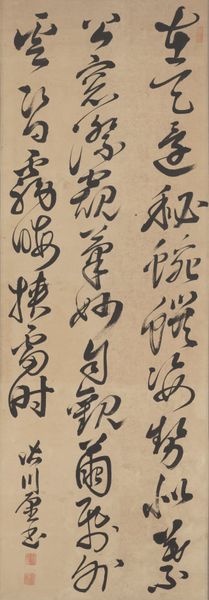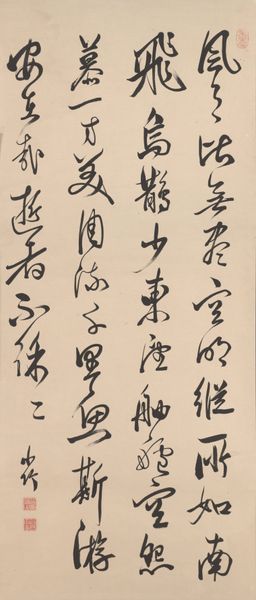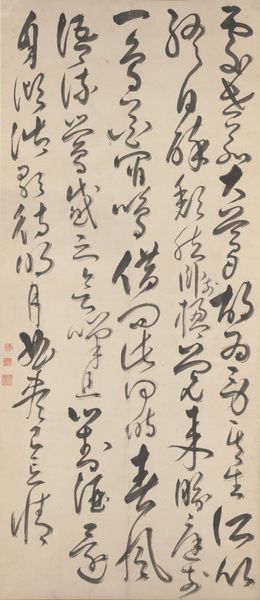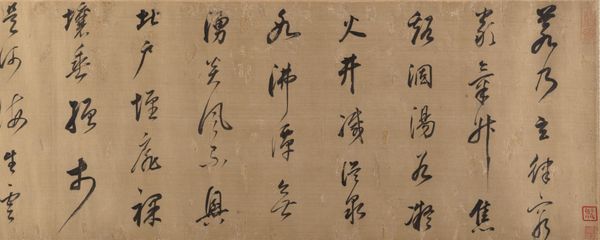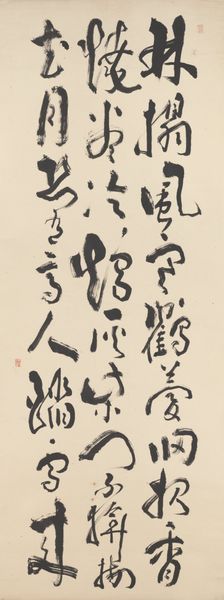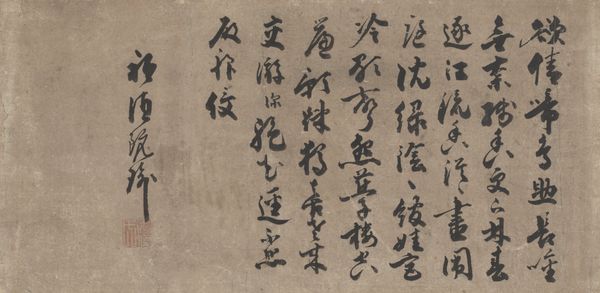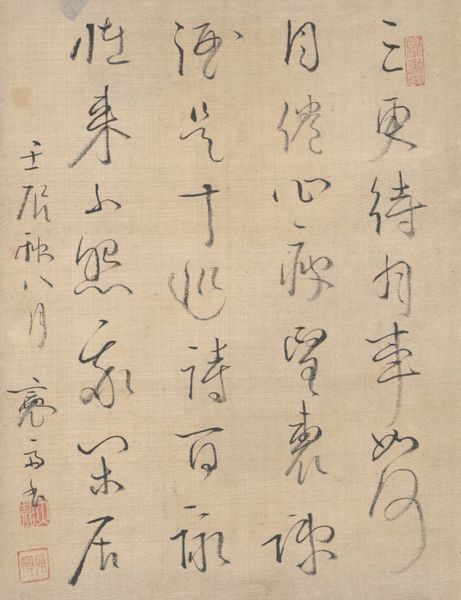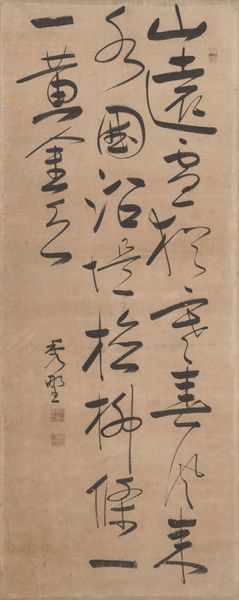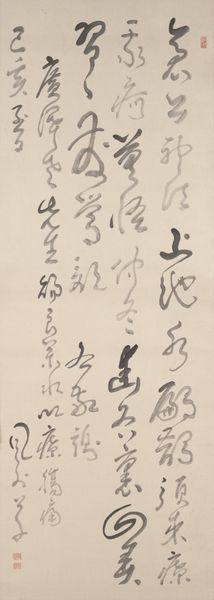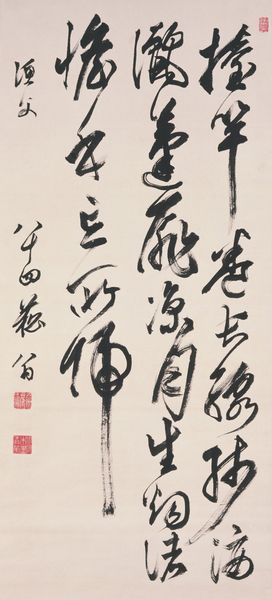
drawing, paper, hanging-scroll, ink
#
drawing
#
asian-art
#
japan
#
paper
#
hanging-scroll
#
ink
#
geometric
#
calligraphic
#
line
#
calligraphy
Dimensions: 6 13/16 × 5 7/8 in. (17.3 × 14.92 cm) (image)40 × 10 11/16 in. (101.6 × 27.15 cm) (mount)
Copyright: Public Domain
Curator: Ah, here we have Hiraga Motoyoshi's "Waka on Decorated Paper," a hanging scroll dating from the mid-19th century. The artist used ink on paper for this piece currently held in the collection of the Minneapolis Institute of Art. Editor: It feels…ephemeral, doesn't it? Like catching a fleeting thought. The strokes are so fluid, almost dance-like. A bit melancholic, perhaps? Like faded memories. Curator: Indeed. The calligraphy, the waka itself, speaks of transience. The elegant, swirling characters emphasize this ephemeral quality. Consider the traditional role of calligraphy: not just writing, but a profound art form meditating on the written word, embodying both its meaning and spirit. Editor: So it’s like…visually embodying the feeling of impermanence, not just talking about it. I can almost feel the poet's breath as the ink landed on the paper. And the paper itself…you can tell it's aged. It adds a certain gravitas. Like a love letter found in an attic. Curator: Precisely! The physical materials themselves—the paper, the ink—carry the weight of time. Waka poems often explored themes of nature, love, and loss. And the act of creating the calligraphy was itself a meditative practice, deeply rooted in Zen Buddhism and Shinto beliefs about the interconnectedness of all things. Editor: Interconnectedness. Yeah. The individual characters almost melt into each other, even though each is unique. It feels…unfinished, but deliberately so. Like the poem, or life, goes on beyond the frame. Curator: That's a beautiful observation. The negative space, the areas left blank, are as important as the inked strokes. It allows the viewer's mind to complete the image, the poem, the thought. Editor: Makes me want to slow down, you know? Appreciate the pause. The imperfection. Things that last even in decay. What does it say, do we know? Curator: Sadly, my dear colleague, my knowledge of the Japanese language falls a little short to translate in totality. It can be an enriching thing sometimes. The mystery. It keeps you wondering. Editor: True, true. It whispers instead of shouts. Thanks for pointing this out; it’s got my mind humming in all sorts of reflective, strange, and delightful keys.
Comments
No comments
Be the first to comment and join the conversation on the ultimate creative platform.

